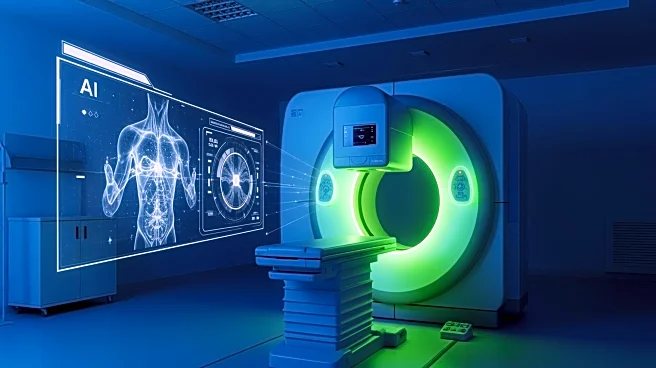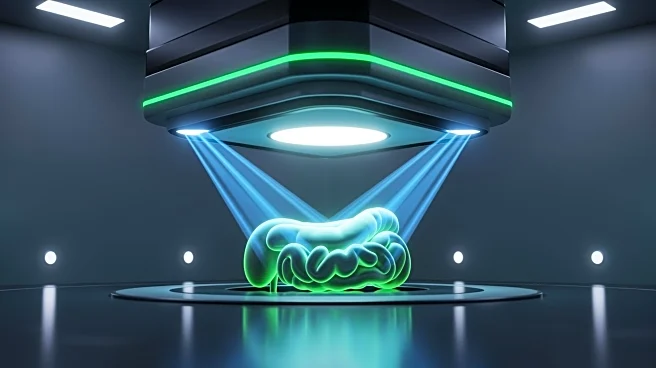What's Happening?
Konica Minolta Healthcare Americas, Inc. is set to present seven scientific presentations on Dynamic Digital Radiography (DDR) at the 2025 Annual Meeting of the Radiological Society of North America (RSNA)
in Chicago. DDR is a non-invasive imaging technique that captures up to 15 sequential radiographs per second, allowing clinicians to observe physiological cycles and individual radiographs. This advancement in digital X-ray technology enables visualization of anatomy in motion, providing a contrast-free method for imaging lung diseases and assessing ventilation in diseased lungs. The presentations will cover a range of clinical conditions, including interstitial lung disease, COPD with emphysema, lung cancer, and pulmonary thrombo-embolism. The research highlights DDR's ability to deliver precise imaging tailored to individual patients, aligning with RSNA's vision for precision medicine.
Why It's Important?
The introduction of Dynamic Digital Radiography (DDR) represents a significant advancement in medical imaging technology, offering a non-invasive and contrast-free method for diagnosing and monitoring lung diseases. This technology enhances diagnostic capabilities, particularly in cases where traditional methods may fall short, such as anatomical overlap in lung cancer detection. DDR's ability to provide detailed pulmonary perfusion mapping and assess functional impairment without the need for contrast agents is particularly beneficial for patients with renal impairments or severe allergies. The global adoption of DDR, as evidenced by research contributions from various countries, underscores its potential to revolutionize radiographic practices and improve patient outcomes through more accurate and individualized imaging.
What's Next?
As DDR technology continues to gain traction, its integration into clinical practice is expected to expand, potentially leading to broader adoption in hospitals and clinics worldwide. The ongoing research and presentations at RSNA 2025 will likely stimulate further interest and investment in DDR, encouraging healthcare providers to incorporate this technology into their diagnostic processes. Future developments may focus on enhancing DDR's capabilities, such as improving its diagnostic accuracy and expanding its applications to other areas of medicine. Additionally, the collaboration between international researchers suggests a growing interest in cross-border partnerships to advance DDR technology and its applications.
Beyond the Headlines
The adoption of DDR technology may have broader implications for the healthcare industry, including potential shifts in imaging standards and practices. As DDR provides a safer alternative to traditional imaging methods, it could lead to changes in regulatory guidelines and influence insurance coverage policies for diagnostic procedures. Furthermore, DDR's ability to deliver precise imaging tailored to individual patients aligns with the growing trend towards personalized medicine, which emphasizes customized treatment plans based on individual patient characteristics. This shift could drive further innovation in imaging technologies and encourage healthcare providers to adopt more patient-centric approaches.















